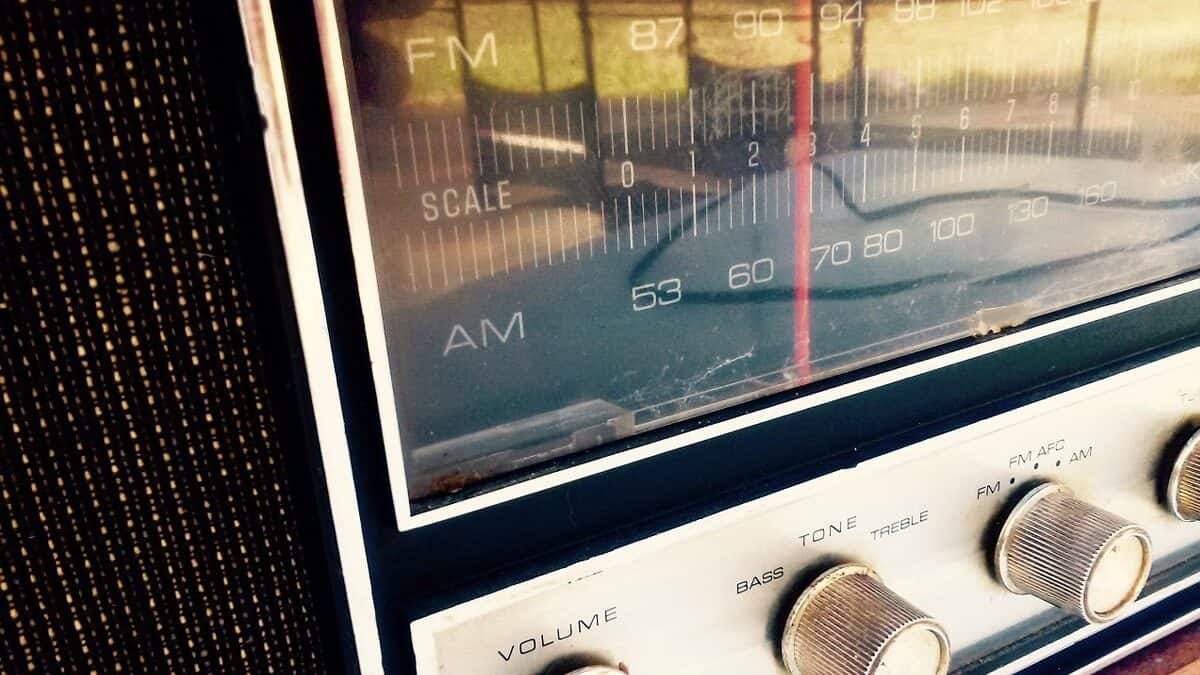There are a number of different frequencies which can broadcast radio waves.
AM stands for Amplitude Modulation
Imagine that you are on a boat in a lake and you want to send a signal to people on the beach. One way would be to rock the boat this way… then that way… then this way and so on. This movement would make the waves travelling to the shore bigger.
AM radio is similar – it uses energy to change the height of the radio waves travelling through the air.
FM stands for Frequency Modulation
FM is like a paddle that move the water around us. Instead of making the waves bigger, we’re increasing the number of waves travelling to the beach.
FM uses energy to increase the frequency of the radio waves travelling through the air.
Interference
Interference is the name we give to things getting in the way of our signals. There’s another way of sending signals – and this way doesn’t get affected as much by interference.
DAB stands for Digital Audio Broadcasting.
This way sound is changed into tiny packets of computer code and these are carried on the waves.
It’s a bit like this: if we were on our boat we could write the letters S.O.S on tons of different rubber duckies and send them towards the beach. Even if some of them got lost, people on the beach would still be able to piece together our signal – S. O. S. Those letters are like the packets of code, which are the signals we are sending through the air.
You can hear The Speakers: Transmission on Fun Kids Radio or listen to the series below!
The Speakers: Transmission with support from Arqiva.





 Fun Kids is on DAB Digital Radio in the UK!
Fun Kids is on DAB Digital Radio in the UK! 


 Listen online -
Listen online - 